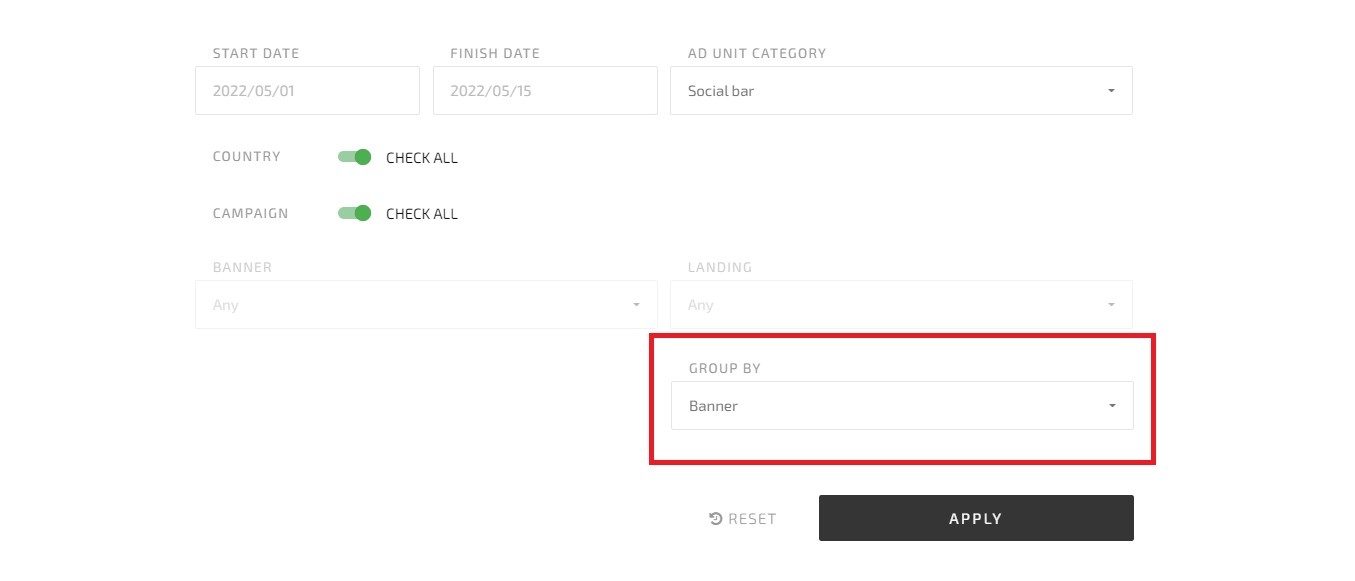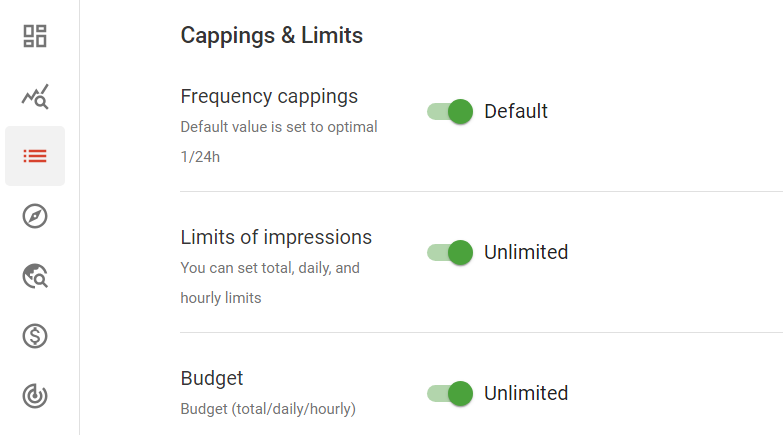You might have read dozens of ad campaign optimization guides. Can you apply any of them to a specific traffic source? Probably not. What makes a tutorial precious is its usability here and now. Readability also matters, of course. You deserve both, and due to this, you will get a hand-picked checklist with actionable tips for marketing campaign optimization.
No one could build this checklist better than our expert Sasha, who also shared secrets of perfect targeting and assisted in setting up your first ad campaign.
Fasten up, and let’s ride!

Sasha Kasatkina,
Head of CPA
Hey there! Our today’s topic is one of my favorites. Every affiliate is somehow an optimization geek, and that’s completely reasonable. You can reduce spending while making a larger ROI. Nothing is needed — only your brain, patience, and persistence. Adsterra advertisers have genuinely sharp minds, but sometimes they fail to be patient and persistent. No worries here! We’re going to make ad campaign optimization more edible today.
But first off, let’s agree on some facts. There are no universal tips that can turn zero conversions into ROI 9000%. I will share some proven techniques that you will need to try and tweak until you get the desired results.
When do you need ad campaign optimization?
To begin with, let’s rewind a film a bit and stop at the point when you need to optimize an ad campaign. Remember that I recommended you launch a campaign with broad targets? That’s because the only way to test traffic is to let it flow and then check which slices bring you the majority of clicks and conversions. So be careful and don’t over-optimize the campaign in the beginning.
Like I said, you first check how the traffic reacts to your offer and only afterward start narrowing down your targets. In many cases, you will even have to increase the bid as the traffic slice is too small, but eventually, it’ll return a perfect CR.
What’s next? One more reminder =) A few words about how to prepare your campaign for the most effective optimization.
How to get ready for ad campaign optimization?
When optimizing an ad campaign, the last thing you want is to get confused in data or exclude some fruitful traffic sources by mistake. You can make your life much easier if you have a plan.
Earlier, I went over the campaign setup flow, where you can find more clues for a better start. But today, we will pin down only the two of them, which I think are vital.
- Avoid setting up campaigns with mixed targets. What do I mean? It’s critical to split campaigns by GEOs, first. You’ll thank me later when you get onto whitelists and blacklists.
- Then, think of splitting campaigns by device types and OS as traffic commonly behaves differently depending on those two factors.
- Add tracking tokens to your landing URL. It’s imperative to have a ##SUB_ID_SHORT## in all CPA campaigns, as it shows when a conversion fires. The ##PLACEMENT_ID## is an absolute must, as well, cause it allows for building black- and whitelists.
Ok, let’s now move to the central part of our guide, a brief checklist of ad campaign optimization tips. Please save it to apply to your next campaign, and get ready to get lots of insights from your traffic!
Ad campaign optimization checklist
Imagine you’ve been running a campaign for quite some time. But you notice that the ROI has started dropping. One more day, and you will fail to meet the KPIs. It’s time to make traffic great again, in other words, to optimize the ad settings and become profitable. That’s how you can do this.
1. Prelanders
First things first, let’s talk about prelanders. Yep, we’re not tweaking the targets for now. The most obvious reason why your offer has started to perform poorly is that you have not changed a prelander for a while. How to make sure that a prelander still rocks? Spy tools will show what’s popping right now and which prelanders are used in your niche. If you’re running a CPA campaign, reach out to Adsterra managers, as they always keep an eye on trending visuals.
2. Creatives
Again, we still have not reached the campaign settings. If you’re running a Social Bar or Native Banner campaign, creatives are your main power or weakness. Apart from testing at least four creatives, you will need to refresh them regularly. The clue is the CTR. As soon as it starts dropping, you need to update the visuals quickly.
My general recommendation is to check for the creatives’ efficiency not less than once a week. If you can do it more often, it will be just great!
With Adsterra, you have a proven means to detect how cool your creatives are. It’s Adsterra Statistics. Just group your stats by “Banner,” which means the “creative version,” and see which ones are on top. You can now exclude those creatives that failed to deliver enough clicks or conversions. Most trackers support the very same function, so use the tool you’re familiar with.

How to optimize creatives?
Save your time — that’s my main advice. Sometimes, you don’t need to upload a totally new visual but to add a new CTA or headline. Re-check the offer’s assets. Maybe, you missed some values that can be included in the headlines and descriptions. Look for the competing creatives with a spy tool. Reuse the main idea powering it with your visuals.
3. Frequency cappings for CPM/CPC campaigns
Congrats! We have reached the ad campaign settings. First off, I would advise you to update the cappings. Well’ it’s more about scaling, but this trick can also help your ad campaign optimization. It commonly happens that a user needs to meet your ads twice or more to make a click. Or, if you choose the highest frequency from the start, you can optimize by decreasing it.
Open the Create Campaign page and scroll to the Cappings and Limits section. All settings are now in their default state, and you can see the clues under each option.

Let’s change the default 1/24 frequency (one ad view per 24 hours) to 2/24. Now, users will be able to see ads twice a day. Or, you can return a 2/24 frequency to the initial 1/24 if the CR worsens.

4. Pricing model
How about testing an alternative pricing model? That’s right! We’re used to thinking that the CPA model is the safest when it comes to budgeting. But you can get loads of quality ad views at a lower price. A burst of fresh traffic has never been too extra, you know 😉
That’s what you can try: create a CPM campaign with the same targets and set up a minimum bid paired with a smaller budget. Sometimes, it is enough to obtain the necessary traffic volume. Or, try an alternative: select those traffic sources with with a highest performance and create a CPA whitelist to run with a higher bid (that’s where the ##PLACEMENT_ID## token is required.) This way, you might have an even lower CPA that initially planned while achieving a higher ROI at the same time. Sounds tempting, isn’t it?
Helpful tools to enhance your bidding strategy
Let’s supplement the optimization capabilities with something new and special: the Smart CPM and CPA Goal features.
CPA goal will allow you to get maximum conversions at the most affordable price. This is how we solve the problem of massive traffic volume and make quality out of quantity – not bad, right? If the advertiser is running campaigns on CPM or CPC pricing models and cares about the price of conversions, it can’t do without the CPA Goal. This will help save money by automatically unlinking placements that are tagged based on the specified criteria (effective CPA or number of conversions).
Now, a bit about Smart CPM and how it saves your ad budgets: everything happens automatically again with the help of a pricing algorithm. The algorithm enters auctions and helps you get ad views at a better price. As soon as your bid wins, the tool will adjust your price so that you pay just a little higher than your next competitor.
For example, if your bid of $3 wins the auction, you will not pay the full $3 but $2.05, just a little more than a competitor who bade with $2.
This way, you never risk receiving a price higher than you are willing to pay. At the same time, you do not have to update bids manually and spend additional resources. All-sides profit!
What to read
- Pro Tips for Running iGaming Campaigns
- How to Run Ecommerce Offers With CPA Marketing: A Beginner’s Guide
- Mobile App Promotion: Ways to Advertise Mobile Apps
5. Spending limits
We carry on with the vital settings, and now let’s discuss limits. Budget limits can be beneficial not only for controlling your spending.
Use them to “spread” the budget throughout the day. Why’s that so important? It happens pretty often that my advertisers set up some daily budget and face their campaign stop at a random time, not reaching the primetime. I recommend setting up an hourly budget limit, as well. Just type in the amount of money you can’t exceed within an hour, and that’s all math! You have your budget distributed evenly throughout the day.

6. Time range limits
This ad optimization technique is utterly important for iGaming, Finance and all campaigns involving call center calls or complex user activity like deposits. Time range settings allowt to exclude unprofitable hours. Urging players to make a first deposit at 4AM? It may work but usually doesn’t.

And one more thing about limits. Don’t limit your daily spending only when you need to cut down on spending. This will rather lead to a ROI drop then to a more efficient budgeting.
6. Campaign’s competitiveness check-up
It’s almost like a health check up, actually. You will often need to have a fresh competitive analysis of a campaign just to make sure you’re getting the hottest traffic at the most optimal payout. When on tests, Traffic Estimator is enough to assess the competition. However, on the optimization stage – and that’s where we are now – it might not be enough.
The most straightforward yet efficient way is to reach out to Adsterra managers. What you can ask and be sure to get informative replies:
- How is my campaign ranked compared to my competitors, and do I get enough traffic with my bid?
- What’s the average eCPM for my target?
- How should I change the bid?
- What’s the most competitive bid (if you’re ready to spend more, of course)?
- How should I change the bid to get the most unique ad views?
7. Black- and whitelisting
This seems obvious, but I will try to add one more valuable tip here. After running a campaign for a while, you can collect data on which placements returned you the majority of conversions. It’s time to exclude the laggards and encourage the winners! That’s when you create blacklists and whitelists (also: denylists and allowlists). And here’s my clue! instead of throwing out the source forever (aka blacklisting it,) decrease the CPM to the minimum using our awesome Custom bid tool. A wise move to give the source another go and see if it’s profitable with a lower bid.
Usually, you will use Custom bid to distribute payouts between placements manually. You can increase the payout for the best-performing traffic sources and minimize spending on the worst performers.
Remember that you should add a ##PLACEMENT_ID## token before the campaign starts to track the placements’ performance.
It is also worth remembering CPA Goal and its capabilities for working with blacklists here. As already mentioned, you don’t have to do this manually: a smart algorithm unlinks placements automatically. You can download the file with all placements removed and use it as a blacklist.
8. Traffic segments (OS, Browser, Carrier, and more)
Remember I advised splitting your campaign by OS? It’s right about time to turn a profit from this ad campaign optimization move. Check your campaigns, and if you see, say, the macOS traffic sending you little or nothing conversions, decrease your bid with no doubt, or even exclude it (if you’re on a later stage of testing.) The budget saved can now be distributed between the best traffic sources. So tweak the CPM now, adding a little more money to your Android campaign. By calibrating bids this way, you can achieve a drastically better result.
Use every possible setting to detect the best-performing sources, but not all of them at the same time, of course. OS, browsers, even browser’s versions (if you’re feeling nerdy), Wi-Fi/carrier, time range targets could be used to pick the best slices and turn your profits full blast.

9. Ad campaign optimization via scaling traffic
While optimizing marketing campaigns, you commonly don’t want to add more traffic and start testing it over again. But that’s what I can recommend trying in some cases.
Let’s imagine you have a Popunder campaign with thousands of publishers sending you pop traffic. But our second-runner is Social Bar which sends almost the same number of ad impressions. It suits any offer and prompts loads of clicks. Why not refresh the audience? Whenever you think you’ve run out of ideas with one ad format, try another one if your offer allows for alternatives, of course.
And the last ad optimization hint is to add another type of traffic. From your account, you can either pick MAINSTREAM or NON-MAINSTREAM type. Create a new campaign with the alternative traffic type, and if it proves to reward you with nice CRs, then split your budget between the two campaigns.
Summarizing
Well, that was a hit-list of the most actionable tips for ad campaign optimization. We encourage you to make up your own secret tactics, for you have Adsterra’s innovative tools to unlock dozens of insights about traffic!
Affiliate marketing wouldn’t be so exciting and profitable if you couldn’t reshape any ad campaign and make a larger profit where others failed. Plenty of high-converting traffic slices are waiting for you to unlock them. But be careful: narrowing your targets at the start will lead to lost budgets and poor conversions. Stay persistent and take one step at a time. I promise you’ll be rewarded for your patience!
